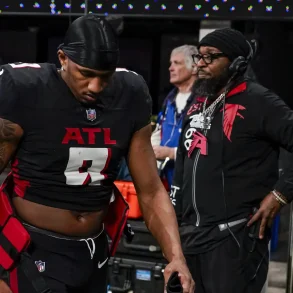As the Kansas City Chiefs enter another offseason after a deep playoff run, they face limited time to address key roster decisions. The most pressing issue at the top of their list is the future of tight-end Travis Kelce. If Kelce decides to retire, it will create a massive void in the team’s starting lineup, but it would also free up $17.3 million in cap space. His status is a significant factor in the Chiefs’ offseason strategy as they look to manage their finances and plan for the future.
Managing Patrick Mahomes’ Contract and Adjusting Cap Space for Future Flexibility
Another crucial aspect of the Chiefs’ offseason is managing the contract of their star quarterback, Patrick Mahomes. As Mahomes moves deeper into his long-term, half-billion-dollar deal, his cap numbers are set to rise significantly.
For 2025, his cap hit will increase to $66.258 million, creating an urgent need to adjust his deal in order to maintain the team’s financial flexibility. This increase is a natural progression as Mahomes’ contract enters its latter stages, but it presents a challenge for the Chiefs in balancing their salary cap.

To alleviate the looming cap burden, the Chiefs have options to restructure Mahomes’ contract. One such solution is to shift a significant portion of his 2025 compensation into a restructuring bonus, which would reduce his base salary to a minimal amount. By doing this, his cap hit for 2025 could be reduced to approximately $28 million, down from the original $66 million. This approach provides short-term relief but will only push the financial burden into future years, particularly by increasing the cap hit in 2026.
Managing Patrick Mahomes’ Contract and Balancing Cap Space with Future Financial Health
While the Chiefs can continue to restructure Mahomes’ contract to manage cap space, this tactic has its limits. Each restructuring pushes future cap obligations forward, which could create larger financial problems in the years to come. Eventually, the team will face an enormous cap hit when Mahomes retires or leaves the franchise. The challenge is balancing the immediate need for cap space with the long-term consequences of these restructurings, which could cause significant cap charges down the line.
One potential solution for managing Mahomes’ contract more sustainably is to tie his compensation to a fixed percentage of the salary cap. This approach would ensure that Mahomes receives a consistent slice of the cap each year while avoiding the creation of massive future cap charges when he eventually departs.
By setting a percentage of the cap, the Chiefs could simplify their financial management, making it easier to navigate the challenges of a long-term deal while minimizing future cap burdens after Mahomes’ tenure with the team ends.







